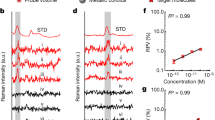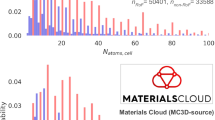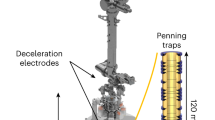Abstract
IT is known that 2.5-sec indium-116mm (ref. l) is formed by neutron irradiation of natural indium and that it emits 0.15-MeV γ-ray. The size of the photopeak due to this γ-ray, obtained immediately after irradiation, can be estimated by the use of the data presented in a γ-ray spectra catalogue2. The peak size per 1 µg of indium is as large as that of silver when they are irradiated respectively for a period equal to the half-life of the nuclide formed, that is, 2.5 sec for indium and 24 sec for silver. Since silver is the most sensitive3,4 in γ-ray counting after neutron irradiation, it is deduced that indium is also very sensitive.
Similar content being viewed by others
Article PDF
References
Stehn, J. F., Nucleonics, 18, No. 11, 186 (1960).
Okada, M., Nucleonics, 19, No. 9, 79 (1961).
Okada, M., Nippon Kagaku Zasshi, 81, 1422 (1960).
Meinke, W. W., U.S. Atomic Energy Comm. Rep. TID-11009, 75 (1960).
Okada, M., Nature, 188, 52 (1960).
Author information
Authors and Affiliations
Rights and permissions
About this article
Cite this article
OKADA, M., KAMEMOTO, Y. Rapid Microdetermination of Indium by Neutron Activation. Nature 197, 279 (1963). https://doi.org/10.1038/197279a0
Issue Date:
DOI: https://doi.org/10.1038/197279a0
This article is cited by
-
The radioanalytical bibliography of Japan (1936–1978)
Journal of Radioanalytical Chemistry (1982)
-
Zerstörungsfreie aktivierungsanalytische Bestimmung von Mikro- und Ultramikromengen Indium in Reinstthallium und Thalliumverbindungen
Fresenius' Zeitschrift für analytische Chemie (1968)
Comments
By submitting a comment you agree to abide by our Terms and Community Guidelines. If you find something abusive or that does not comply with our terms or guidelines please flag it as inappropriate.



